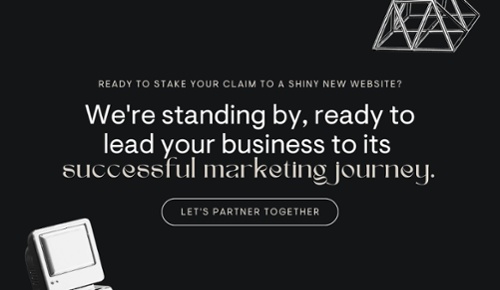BLOG What iOS 15 Means For Your Business
What iOS 15 Means For Your Business
POSTED BY Danielle Holmes | Oct 22, 2021

A wave of marketing panic broke out in June after Apple announced major privacy and feature changes for the next operating system update. Spoiler: take a deep breath, make sure you have your towel, and see how we’re navigating these changes as a digital business.
The iOS 15 update was announced by Apple in June of 2021 and went into effect in early September. This update currently applies to mobile devices and iPads using iOS 15. And while the big takeaway in the marketing and privacy sectors was mail privacy protection, there is more to the iOS 15 update than just email privacy. Most of the operating system update centers on ways for users to stay focused on the task at hand (no small feat in our busy, multitasking world). But, the feature that is the biggest concern to marketers and small business owners is the privacy update.
iOS 15 Privacy Features Explained
According to Apple, iOS 15 gives users, “increased visibility into how apps access your data, protects you from unwanted data collection, and gives you more control over what you choose to share.” According to their features list, this privacy feature gives you greater control over privacy across your user experience. And while it does impact all apps used on the iOS 15 devices, inbound marketers are focusing on issues related to open rates in the Mail Privacy Protection feature.
What is Mail Privacy Protection?
Apple gives a straightforward explanation.
Mail Privacy Protection hides your IP address, so senders can’t link it to your other online activity or determine your location. And it prevents senders from seeing if and when you’ve opened their email.
How Does This Impact Your Email Marketing?
Bottom line: You won’t be able to see if a user on an iOS 15 using device opened your email. Since this update went live in September, marketers and business owners have shared how this update has impacted their email marketing campaigns
- Disruption to re-engagement campaigns
- Problems with automated nurture flows
- Difficulties with send time optimization
- Limits to real-time personalization
- Limited monitoring deliverability
But before you see this update as the end of email marketing and start to close your HubSpot account, consider this.
Choose, Not Automatic
Apple specifically describes the update as a way for users to see how apps use and share their data. The update doesn’t automatically block their IP address. The user has to choose to update their system and choose to block.
Research tells us people WANT personalization. So, while many may opt-in, with a clear explanation of how you will use their data, a user may be willing to opt-out.
- 83% of consumers are willing to share their data to create a more personalized experience. (Accenture)
- 76% of buyers expect more personalized attention from marketers to develop an intimate relationship with your brand. (Demand Gen Report 2020 Buyer Behavior Study)
- 80% of customers are more likely to make a purchase from a brand that provides personalized experiences. (Epsilon)
- 6 in 10 marketers report that boosting personalization in email is a priority. (Litmus 2020 State of Email, Fall Edition)
iOS 15 Isn’t the Only Operating System
Reporting shows Apple iPhone, Apple Mail, and Apple iPad make up about 46% of opens. While you may not be able to analyze all your data the way you have in the past, you are still able to analyze open rates from Android and other non-iOS operating systems. Consider segmenting your existing lists by operating system.
Emails are More Than Open Rates
Don’t get us wrong, email open rates give us a lot of data. They let us know what’s working, what doesn’t, and if there are big problems with nurture sequences. But, an open rate isn’t the only form of analytic tracking. Consider including links to free downloads, clicking to your business website, or asking for a response. These can all provide meaningful data to improve your marketing campaign.
Takeaway: Encourage opt-outs with educational content, look to non-iOS opens for data, and try new engagement techniques.
Primitive Believes Privacy and Choice Matter
No business or marketers want an effective and telling metric hidden. And we never want a barrier to personalization with clients. But we know—just like you—that the key to an effective marketing list isn’t the volume of contacts, it's the quality of contacts. No one wants a list cluttered with people who won’t buy your offering.
We are looking to more personalized opt-ins, redirects and links to downloads, and asking for engagement in emails themselves. We know this will give you (and us) a cleaner, higher performing list—regardless of the user operating system.
3 Ways to Crush Email Marketing and Respect Privacy
- Analyze non-iOS users through segmenting your list.
Use your current list and ask your software to segment by operating system. If you’re using a paid email marketing platform, your software should be able to do this. Once your list is segmented by iOS and non-iOS, run your current analytics on the non-iOS users. You should be able to apply your takeaways across the entire list. - Find new metrics with engagement.
While open rates may be blocked with Mail Privacy Protection, you should still be able to see downloads from a landing page or website. This is a great opportunity to offer your audience helpful, educational content to track different metrics. - Get to know clients through research.
Open rates reveal what we know to be true and highlight when we get things wrong. Research methods like competitive analysis, audience interviews, and A/B testing can give you that information and more. And, we’re willing to bet what you find with person-to-person research will prove more valuable.
You can get the information you need to create content that resonates, generate leads, and increase sales—all without open rates.
Primitive Wants to Help
Maybe new marketing and analytics techniques seem like too much for your already busy schedule.
Maybe you’re not sure how to segment lists by operating system.
Maybe you want to know your client better, but aren’t sure where to start.
Don’t worry about it. We have the people and skill sets to help.
Whether you need research, a consultation, or want to hand off your digital marketing—we want to be your partner.
Let’s talk!
SHARE THIS POST:

About the writer, Danielle Holmes
Danielle has been telling stories her whole life. And for the last five years she’s been telling the stories of entrepreneurs, small businesses, and companies bringing quality products and services to customers. Danielle got her start in academia. With degrees in English and anthropology, she spent more than half a decade learning how to ask questions, tell stories, and do thorough research. Her approach uses ethnographic interview and coding techniques to better understand brands and clients. She listens for key words, recurring topics, and core ideas to know the client and their ideal audience. She uses that data and understanding to tell stories—true to brands—that create loyal customers.

